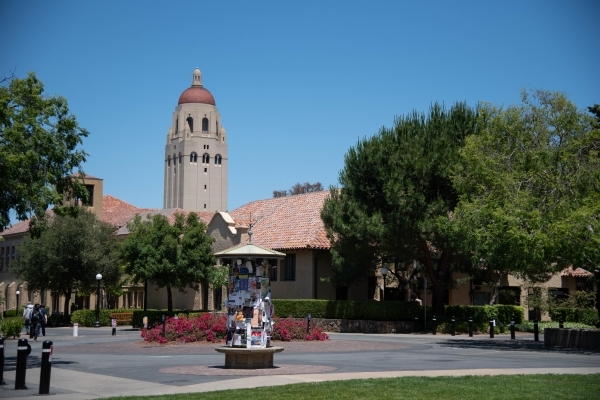Stanford University abruptly abandoned on Friday its contentious plan to expand its campus by 3.5 million square feet, citing ongoing disagreements with the Santa Clara County Board of Supervisors over the approval process.
The university’s announcement came just before the board was scheduled to hold its fourth and potentially final meeting on Stanford’s General Use Permit, a project that is often referred to as the "largest in the county’s history." If approved, the permit would have allowed Stanford to build more than 2.275 million square feet of academic space and 2,600 student beds between now and 2035. The announcement also came days after the university had reportedly agreed to build 2,172 units of staff housing, consistent with recommendations from county staff. Stanford’s application had initially proposed 550 units of workforce housing.
The biggest split between the county and the university came over a possible "development agreement," a negotiated contract that would have guaranteed Stanford development rights in exchange for a list of public benefits. The county authorized in October 2018 the use of a development agreement in approving Stanford’s expansion, but negotiations broke down in April and never resumed.
While Stanford has repeatedly stated that it would not accept approval of the General Use Permit, supervisors have been reluctant to restart negotiations, opting instead for a traditional regulatory process that analyzes the impacts of proposed developments and imposes requirements that mitigate these impacts.
In the case of Stanford’s GUP, the requirements from county planners included additional workforce housing and more stringent traffic regulations, including new requirements that the university not significantly increase average daily trips and reverse commutes to and from campus.
In its announcement, Stanford cited the county’s proposed traffic requirements and the ongoing dispute over a development agreement as the two factors that prompted the withdrawal of its application. The university argued that the traffic requirements sought by the county would not be feasible given the additional housing mandated by the county.
Stanford has consistently argued that a development agreement is necessary so that it could have "predictability" for future growth in exchange for delivering community benefits such as housing, traffic improvements and funding for Palo alto Unified School Districts.
The university also announced that it is "committing to a new phase of engagement and dialogue with neighbors and surrounding communities."
"We have taken this step with regret, but with a clear-eyed understanding of the challenges before us in achieving a successful long-term permit at this time," Stanford President Marc Tessier-Lavigne said in a statement.
"Stanford remains proud to be a citizen of this region, deeply committed to contributing to its economy, health and quality of life."
Tessier-Lavigne also said that through the new engagement process, the university hopes to "gain deeper mutual understanding of the challenges facing our region, how Stanford can best enhance its contribution to addressing those challenges, and what the implications are for our longer-term campus development."
This university’s plan has become increasingly contentious, with hundreds of people packing into Palo Alto City Hall at the Oct. 22 hearing on the General Use Permit to demand more contributions from the university. The meeting was preceded by protests from more than 100 undergraduate students who argued that the Stanford should provide more housing as part of the expansion, which is expected to increase the campus population by more than 9,000 people. Graduate students and postdoctoral researchers had requested more financial support and child care services, while elected officials from San Mateo County demanded “full mitigation” of the expansion’s housing and traffic impacts.
The coalition of San Mateo County cities, which includes East Palo Alto, Atherton, Menlo Park, Portola Valley, Redwood City and Woodside, as well as county staff requested $196 million for an affordable-housing fund, $4.62 million for roadway improvements, $15 million for bike and pedestrian connections, $5 million for stormwater management and $6.78 million in “in-lieu property taxes” to compensate communities where Stanford owns properties and enjoys property-tax exemptions.
In a sign of the growing rift between Stanford and the surrounding communities, elected officials co-signed a letter last month accusing the university of not paying its “fair share” for things like road improvements, public safety and other services.
"Here's what every resident in San Mateo County needs to know: Stanford – with its $26.5 billion endowment — expects to reap all the rewards while leaving local taxpayers grappling with the resulting traffic gridlock, spiraling housing prices, impacted schools and environmental consequences," the letter stated.
Stanford, which has been going through the application process since 2016, was scheduled to hold its fourth hearing in front of the Board of Supervisors on Nov. 5. It has already won the approval of the county Planning Commission, though the commission rejected its proposed development agreement.
The county and the university have characterized Stanford’s offer in strikingly different ways, with the university valuing it at $4.7 billion and the county estimating to cost of actual benefits at $168 million ($30 million in traffic improvements and $130 million for Palo Alto Unified School District). The majority of the purported benefits, county staff argued, are things that the university is required to provide or that are part of the application.
Deputy Executive Director Sylvia Gallegos said at the Oct. 8 hearing that the university and the county remain "very far apart" on what a development agreement should entail.
"The review and processing of a development application is a regulatory process. It's not a negotiation," Gallegos told the board.



Comments
Registered user
Sylvan Park
on Nov 1, 2019 at 11:39 pm
Registered user
on Nov 1, 2019 at 11:39 pm
Translated: Stanford will work to line up political support for whatever it wants - maybe even with an investigation of opponents by Ukraine and with candidates for county supervisor seats. Borrowing a concept from the first TERMINATOR MOVIE, Stanford WILL BE BACK.